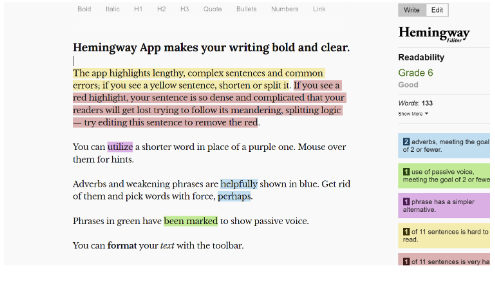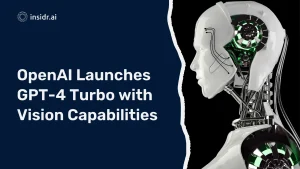
AI can be used for a lot of different types writings for creating content.
You can take the help of artificial intelligence right from the start of the content creation process i.e., the research down to the editing and post-writing phase.
This time at Insidr AI, we will be looking at how you can maximize the potential of AI in your content creation process.
We will discuss different tools as well as how you can utilize them to improve the final quality of your write-ups.
1. Utilizing AI for Research
As we said earlier, the use of AI in content creation can be introduced right in the preliminary stages i.e., the research. Let’s explain this with some examples.
When we talk about using AI for research purposes, we refer to using tools like SEMrush, SurferSEO and Ahrefs to find useful ideas for featuring in your content.
For example, if you are writing a blog post centered around a particular keyword, you can use tools like these to find other useful secondary keywords that you can add to complement the main one.
In the same way, if you want to make your content more valuable for your readers, you can research FAQs using these types of tools as well.

Of course, the techniques that we’ve mentioned about using AI for research are a little indirect.
For more direct and instant help, you can use tools like Frase.io that provide you with useful material for the given topic.

Using this particular app i.e., Frase.io, you can see the popular pages on the SERPs for the topic that you’re writing on.
The pages appear next to the editor and you can use them for finding out relevant material to feature in your content.
We have to add a word of caution here, however. While using these types of tools can be great for research, you have to be careful not to take it too far and end up taking whole swathes of content without changing it.
2. Utilizing AI for Maintaining Readability
Another useful role that AI can play in content creation is maintaining readability. If your content has low readability, its overall quality can be adversely affected.
There are a lot of AI tools available that you can use to analyze the readability score of your content and find ways to improve it.
There are different elements in writing that can contribute to a high (or low) readability score.
For example, if there is too much passive voice in the content, then it won’t be very easy to read.
Similarly, if there no adverbs in there, the readability will also be low.
This is something that you can take help with using AI tools. There are a lot of readability checkers that can quickly evaluate the content and point out the readability issues in it.
Once you find the issues, you can resolve them to improve the overall quality of your write-up.

We did just mention resolving readability issues, but we didn’t elaborate on how you can do that easily.
For the most part, getting rid of readability issues can be simple and easy. In a lot of cases, the non-readable parts or the things that make the content non-readable can be removed altogether. But in some cases, they have to be carefully reworded.
Here is an example. If you’ve written something like this:
“The incongruency of his vitriol because manifest as he started to foam at the mouth.”
…then you can’t simply remove the hard words and hope for the readability to improve.
Since all the elements in this sentence are difficult to understand, they have to be reworded rather than removed.
In this sort of case, you can do two things.
You can either reword the content yourself or you can take the help of an online tool.
Let’s look at the manual way first.
When it comes to manually rewording content, you can do the following things:
- Replacing the words with their synonyms
- Changing the sentence structure
- Breaking the sentences
- Merging the sentences
Following the above steps, if we reword the above sentence, we get the following:
“The absurdity of his criticism became clear when foam started to come out of his mouth.”
In this example, you can see that the words have been changed with their synonyms along with some mild changes to the sentence structures.
The limitation of this method is that you can’t operate beyond the confines of your own knowledge and vocabulary.
If you don’t know the synonyms of a particular word, you won’t be able to replace it for better readability.
In this sort of case, using an AI based online paraphrasing tool can be the better choice.
These tools work on algorithms that allow them to find the synonyms of just about any word and add them to the input text.
3. Utilizing AI for Grammatical and Spelling Perfection
If you want to maximize the potential of AI in content creation, you can utilize it for attaining grammar and spelling perfection in your content.
Having the right AI algorithms is necessary for a quality grammar checker.
With the right algorithms, the tools can understand the meaning/context of the sentences that they check.
This way, they can offer the correct suggestions to the users.
A good example of a high-quality AI grammar checker that you can use for getting rid of grammar/spelling errors in your content is Grammarly.
We’re just giving an example here, but here it what it looks like when Grammarly spots errors and provides suggestions:

As we said, the above is just an example. There are a lot of other grammar checkers that you can use for this purpose.
You just have to make sure that the one you pick has a smart AI-based working. That way, you won’t have to worry about any errors slipping by.
4. Utilizing AI for Content Conciseness
Shortening existing content is not easy. You have to read the whole thing and capture the main idea.
Then, you have to rewrite the main points in such a way that the core concept is conveyed without unnecessary fluff.
You can use AI-based tools for this purpose as well. There are a lot of tools that you can use to summarize text online. These tools are made to understand the given content, take out the main ideas and then compile them together.
It is worth noting that the majority of online summarizing tools generate an extractive summary rather than an abstractive one.
An extractive summary is generated by taking sentences from the given content and then treading them together.
On the other hand, abstractive summaries are created by understanding the content and coming up with new and original sentences to describe the main points.
As far as abstractive summaries go, only a few online tools are equipped to generate them.
And it also has to be remembered that even with the extractive ones, you have to be careful about checking the outputs to make sure that there are no contextual errors in them.
5. Utilizing AI for Plagiarism Detection
Last but not least, another excellent way in which you can utilize AI during the content creation phase is to use AI-based plagiarism checkers.
When it comes to plagiarism checkers, the integration of AI is somewhat subtle. In other words, the normal working of a plagiarism checker i.e., the detection of matched sentences from an existing source, does not involve AI.
However, the tools that do come with AI algorithms are also able to detect such sentences that largely (not fully) match the content found in other sources.
The purpose of this type of detection is to help the user find paraphrased content that be present in the input text.
OCR uses machine learning technology to recognize patterns and material using a predetermined set of rules.
Unsupervised learning is used in conjunction with supervised learning to complete this process.
Conclusion
By utilizing AI in the right forms, you can make your content creation a lot quicker and more efficient.
Apart from the methods mentioned above, there are a lot of other ways in which you can leverage AI to get help in your writing process.
Let us know what you think about this post in the comments below.
Discover More AI Tools
Every week, we introduce new AI tools and discuss news about artificial intelligence.
To discover new AI tools and stay up to date with newest tools available, click the button.
To subscribe to the newsletter and receive updates on AI, as well as a full list of 200+ AI tools, click here.







